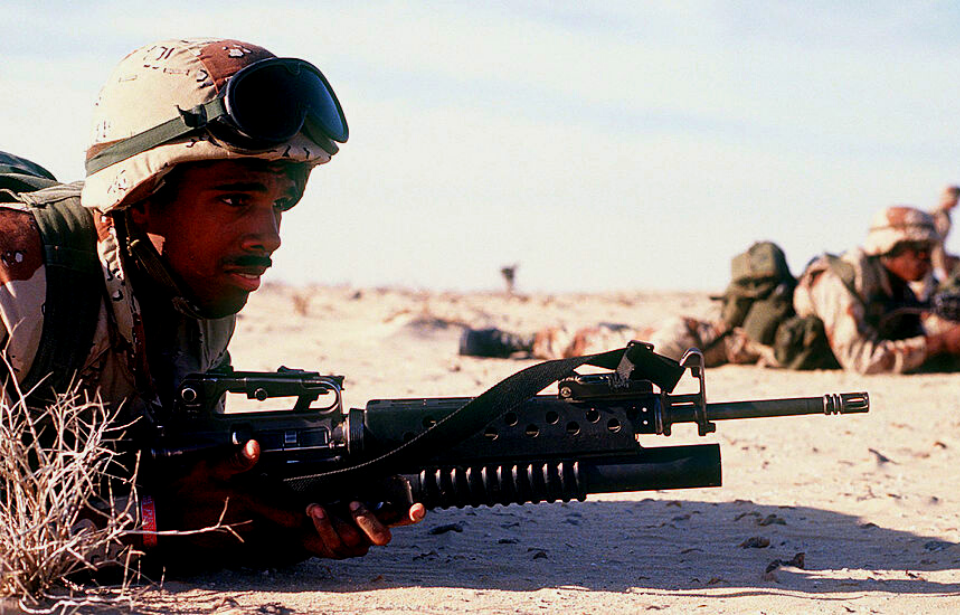Throughout the course of the Vietnam War, the US Army developed a number of grenade launchers to aid forces in Southeast Asia. One of those was the M203, a single-shot under-barrel launcher designed to attach to shoulder-fired rifles.
Designing a new weapon for close combat
The M203 grenade launcher was designed by AAI for close combat in areas that couldn’t be reached by direct fire. It was intended to be a “tactical” accessory for the M16 rifle and its variant, the M4 carbine, and was developed in response to the US Army’s Grenade Launcher Attachment Development (GLAD) program.
After being type-classified in 1968, the Army awarded AAI a contract to produce 600 for use in Vietnam. At a cost of $1,082 USD per unit, the launcher is currently manufactured by Colt Defense, Lewis Machine & Tool Company, Diemaco, Knights Armament Company, Airtronic USA, US Ordnance and RM Equipment.

There are numerous variants of the M203 available, with the differences being in the attachment, length of the barrel and their quick detach (QD) capabilities. Stand-alone variants exist, as do those designed for rifles used by other countries, such as the Canadian C7.
The M203’s specifications
The M203 clocks in at just three pounds, with a barrel length of 12 inches and an overall length of 15 inches. It attaches to the under-barrel of a rifle, with the trigger just forward of the magazine. This is different than the M79 grenade launcher, a stand-alone weapon, and is to the advantage of the operator, as the under-barrel system allows them to easily switch between a rifle and the M203.
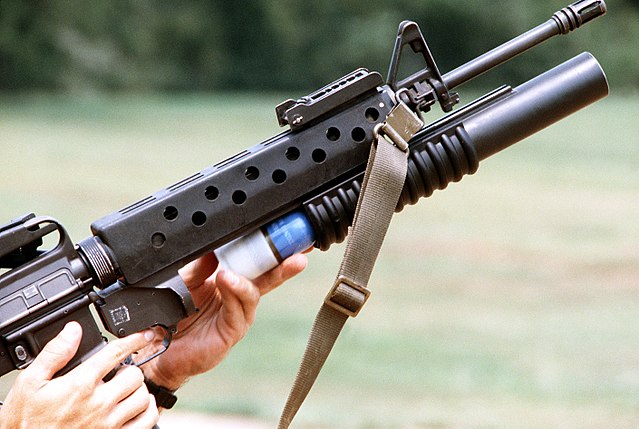
The 40×46 SR mm ammunition used by the M79 was passed to the M203, due to its effectiveness in breaking through buildings, destroying bunkers, damaging soft-skinned vehicles and producing mass casualties. The launcher is also equipped to fire a number of other rounds, including:
- M433 high-explosive dual purpose round
- M576 buckshot round
- M406 high-explosive round
- M651 CS (tear gas) round
- M583A1 star parachute round
- M781 practice round
- M585 white star cluster round
- M713 ground marker round
While most effective at 164 yards when targeting vehicles and at 382 yards for team-sized area targets, the M203 has a maximum firing range of 437 yards. It is typically fired from the shoulder in either a prone, standing or kneeling position. Operators don’t have to fear the possibility of backblast hazard, and it has minimal muzzle blast hazard.
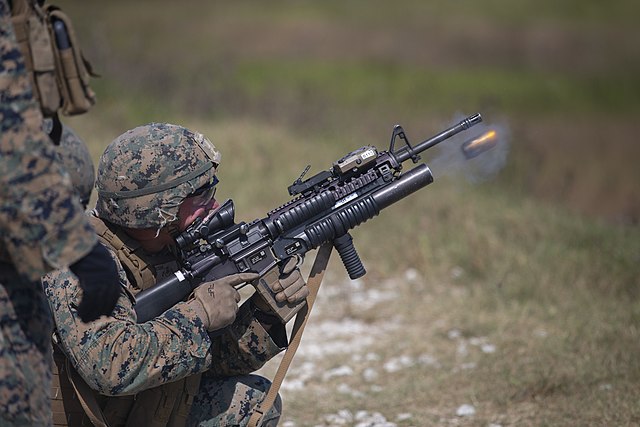
As the M203 doesn’t come equipped with a sight, one must be fitted to the rifle the launcher is attached to. As such, it comes with various components, including leaf and quadrant sights, along with adaptors that allow it to attach to different rifles.
The weapon isn’t without its faults
Despite its decades of use, the M203 grenade launcher has a number of issues users have to contend with. For starters, it adds both bulk and weight to a serviceman’s rifle, and the fore grips aren’t that great, as they have to be placed in an area that won’t interfere with the reloading process. As well, the rifle-launcher setup is said to be particularly noisy, as the rifle’s swing swivel hits against the M203.
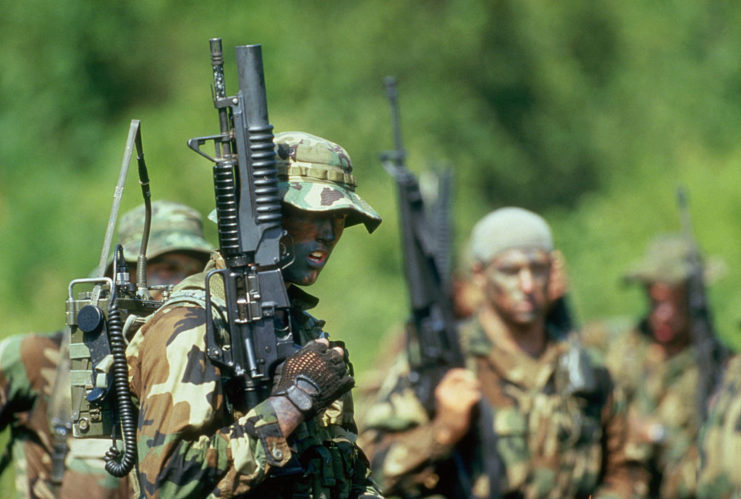
There are also a number of safety issues. The M203 doesn’t have a safety mechanism built into it, and it’s prone to falling off a rifle after a shot is fired. Not only is it tedious to reinstall, it also puts the operator in a dangerous situation. There were also initial issues with the M203 suffering from reliability issues in cold weather conditions, but these have since been remedied.
Vietnam War-present: The M203’s use in combat
After rigorous testing, the M203 grenade launcher was introduced to US military forces operating in Vietnam in the early 1970s. It was incredibly useful, leading to its use in other conflicts involving the US, including the 1983 invasion of Grenada, UN peacekeeping missions in Lebanon, the Gulf War and a host of other operations in Bosnia, Haiti and Somalia in the 1990s.
In recent years, the US has made use of the weapon during the War in Afghanistan and the Iraq War. It’s also used by a large portion of the world’s military powers, meaning it also saw use during the Laotian Civil War, the Cambodian Civil War, the Sino-Vietnamese War, the Cambodian Vietnamese War, the Third Indochina War and, most recently, the Syrian Civil War.
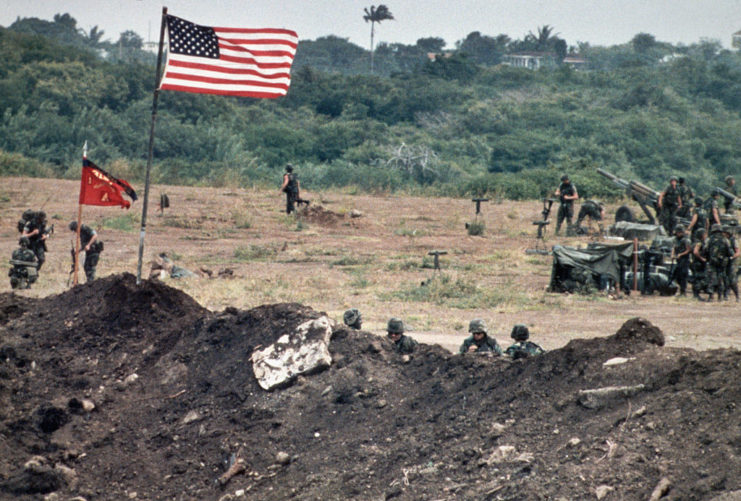
Are you a fan of all things ships and submarines? If so, subscribe to our Daily Warships newsletter!
In 2019, the Pentagon began replacing the M203 with a new grenade launcher, the M320. The M320 is a lightweight launcher known for its safer operation, improved ergonomics, and the fact it can be used as either its own weapon or attached to the under-barrel of rifles. It was first introduced to the Army and has since seen used by the US Marine Corps.
